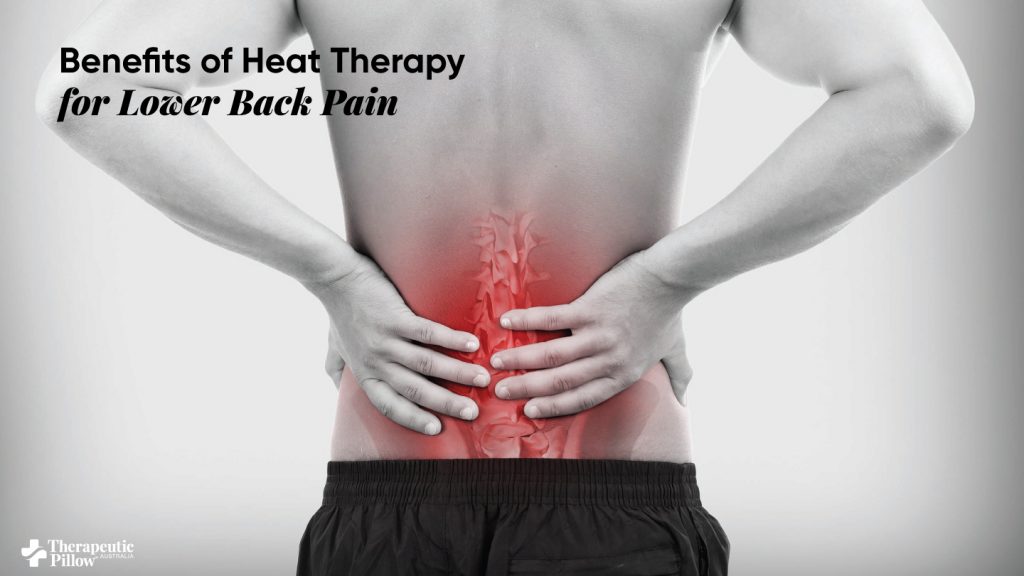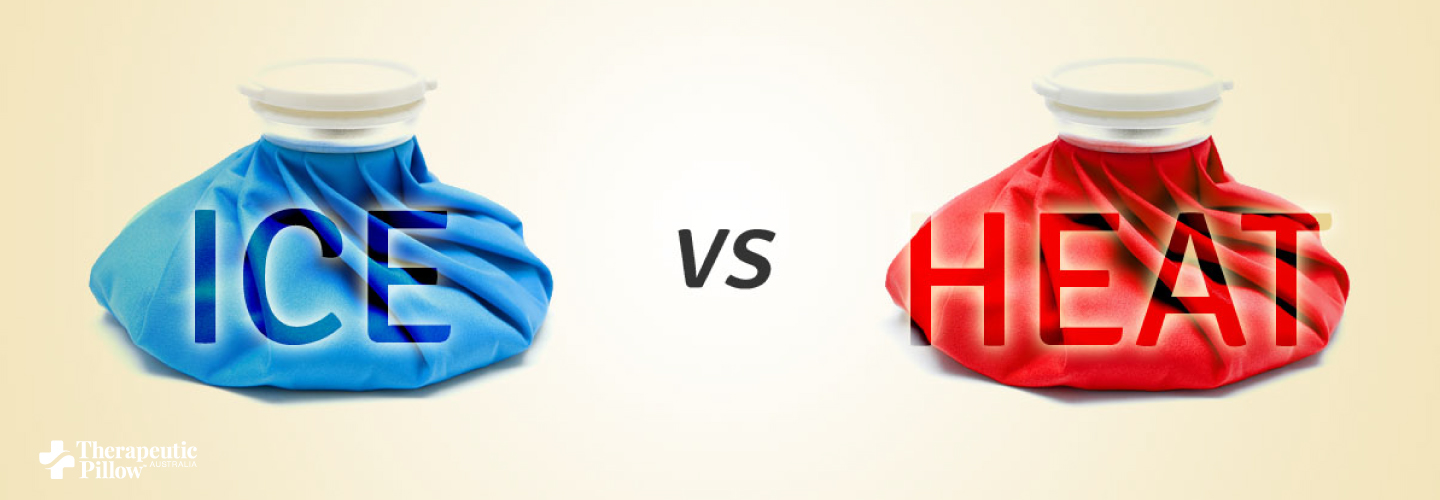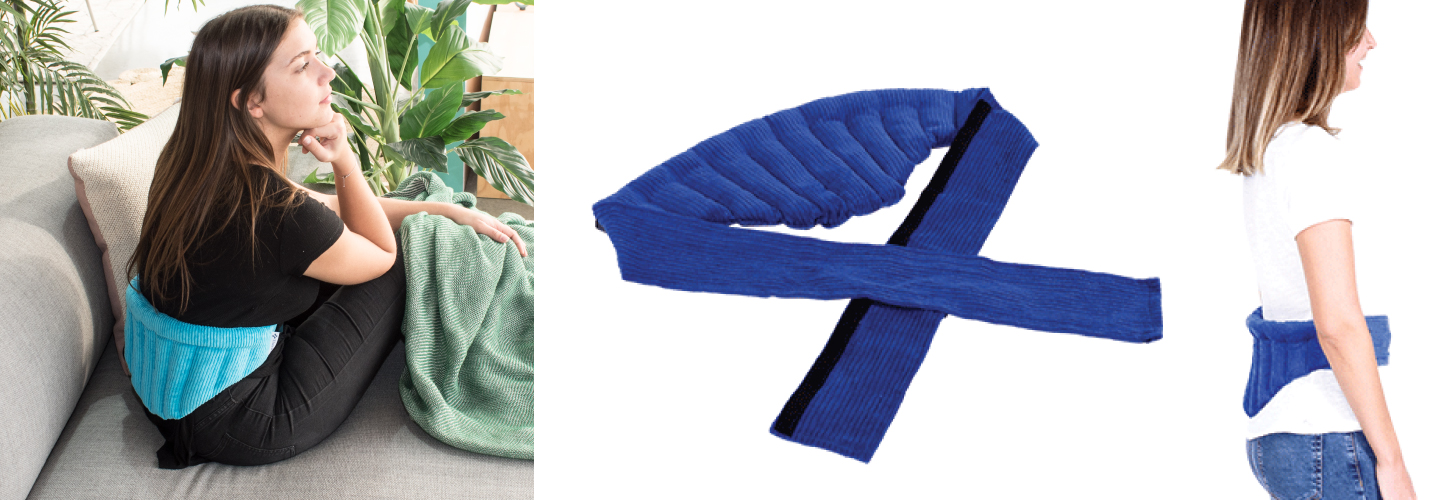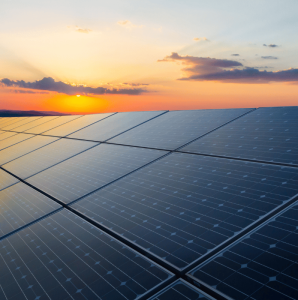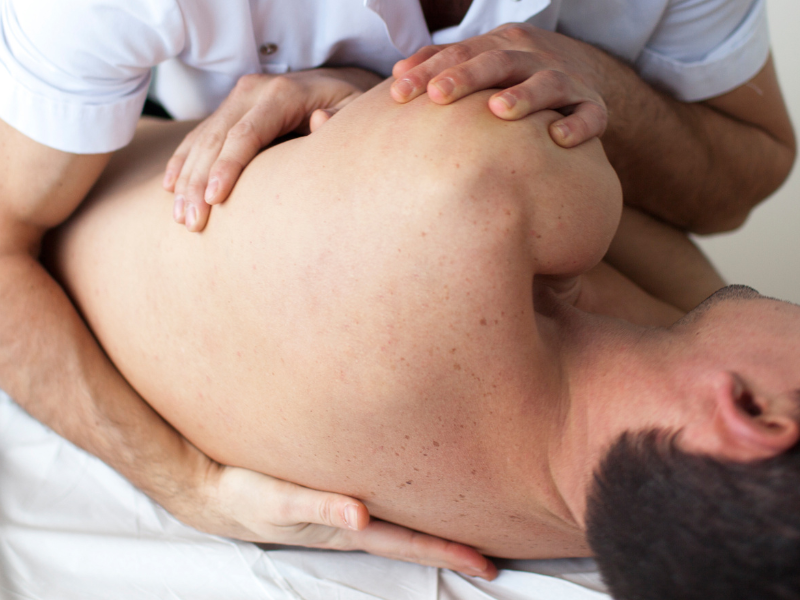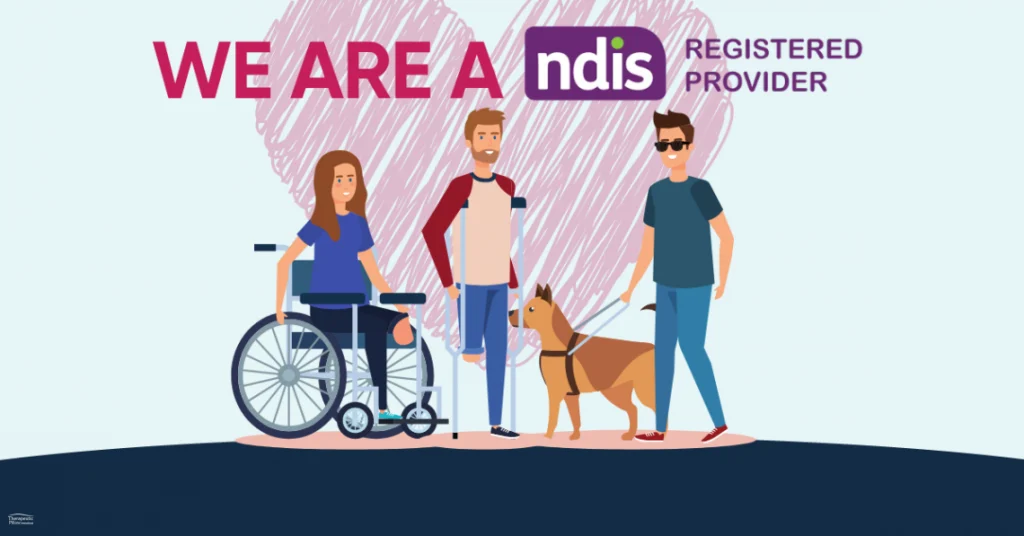Lower back pain is arguably the most common ailment that people will suffer from in their lifetimes.
Back pain in general is subject to many different treatments from over-the-counter medication to expensive therapies designed to correct the position of the spinal column in order to reduce the pain.
However, most instances of lower back pain are muscle-related which means that increasing the blood flow to that area will help bring more relief. An increase in the blood flow to the affected area will help to loosen the muscles and help to heal the affected area even faster. This can be achieved with certain over-the-counter pain relief medicine such as aspirin or through even simpler measures by heating up the affected area.
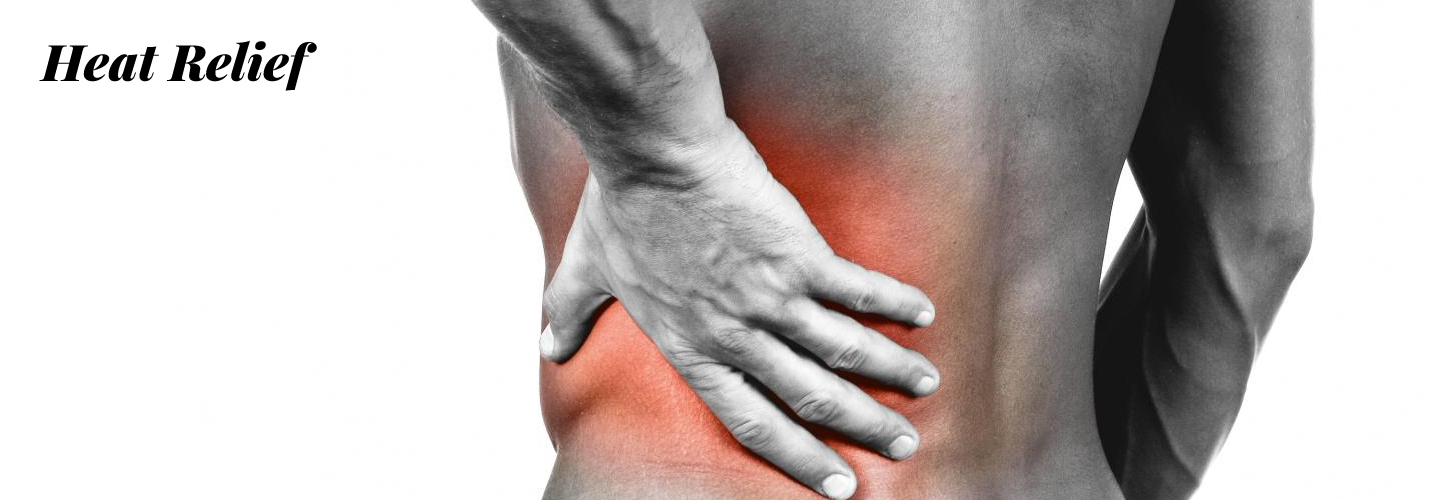
How Does Heat Relief Work?
When the muscles are heated, the blood vessels inside relax and open up more which in turn brings more blood flow, nutrients and oxygen to the affected area. This action can reduce that pain not only in the muscles but in the joints, tendons and ligaments as well. Heat has been used for many thousands of years to bring about pain relief in muscles all over the body.
The heat being applied also reduces muscle spasms which can decrease the range of motion as well. Basically, applying the right amount of heat acts in a similar fashion to exercising the muscle which in turn also increases blood flow and flexibility to the areas that are affected.
How to Apply the Proper Amount of Heat
There are a number of products that can apply heat to the affected area, most of which are inexpensive and can be stored just in case the heat is needed. The most important aspect of applying heat to the affected area is that it cannot be too much that it burns the skin. If you cannot hold the item in your hands, then it is certainly too hot for the skin on your back.
The sources of heat that are commonly used to alleviate back pain are as follows;
Water Bottle
Gel Packs
Hot Towels
Hot Bath and More
Each of these applications when applied properly can help relieve the pain and stiffness associated with lower back pain. However, they must be applied properly and they must maintain a temperature that is constant for a long enough period of time to penetrate the skin and work on the muscles in question. In addition, your physician or physical therapist can recommend products for you to use as well.
Wet or Dry Heat?
One of the questions many people have about using heat is whether it should be wet or dry. The truth is that if the heat is constant and applied long enough, then it matters little which one is to be used. However, the difference is that water or liquid does conduct the heat better to the skin than traditional dry methods, so the pain relief aspects will reach your back muscles sooner if the product used is wet.
What is the Best Method for Using Heat?
First and foremost you should not apply a device of heat to your body that does not offer some type of protection for the skin. You can always place a thin towel between you and the item in question so that it does not burn or mark the skin. Naturally, if you take a hot bath you should be careful to check the water so that it is not too hot. Admittedly, this is where a hot tub with water jets can come in handy to bring massaging action to your back with hot water.
You should apply heat to the affected areas of the back and joints whenever you feel the pain. However, some of the pain will linger for a while after you remove the heat source, so be prepared and take extra caution when you have to move around. Ideally, you can use a heating device on your back pain as you go to bed and then remove it once you are ready to go to sleep.
Tips on Using Heating Devices
There are a number of aspects that you should be aware of when using any type of heating device for your back pain. By following these tips, you can get the most out of these measures without causing any additional issues so that you can feel relief that will last as long as possible.
Under 20 Minutes: Whether you take a hot bath or use a device or pad to apply the heat, it should not be for more than 20 minutes at a time. This is because the rest of your muscles are cooling down as well which will mean more stiffness in the rest of your body. Instead, apply the heat for 20 minutes and then get up and around unless you are already in bed and are going to go to sleep.
With Swelling, Use Cold First: If there is swelling associated with your back pain, then you will need to apply a cold compress to reduce the swelling before adding the heat. Adding heat first will only make the swelling worse, so start off with a cold compress for 20 minutes.
Don’t Lie Down on a Heat Source: Even a heat source that may seem comfortable at first is not one to lie down on and then fall asleep. You can easily burn the skin on your back given the compression. Instead, let the heat source rest on top of your back as you lie on your side or stomach, then remove it yourself or have it removed after 20 minutes if you should fall asleep.
Times When Not to Apply Heat Therapy: There are certain conditions when you should not apply heat to a sore back;
Poor Circulation
Open Wound or Stitches
Diabetic
If you have one of these conditions, you should consult with your doctor about what is the best method for relieving the pain in your back first.
By following these tips, you can bring about relief to your back pain and do so while taking fewer medications.
Do you want to learn more? Read our Frequently Asked Questions for...
Lower back pain can be caused by various factors. One common cause is muscle strain or sprain, which can occur due to poor posture, lifting heavy objects incorrectly, or sudden movements. Another cause is herniated discs, where the soft cushions between the vertebrae in the spine become damaged and press on nearby nerves. Degenerative conditions like osteoarthritis and spinal stenosis can also lead to lower back pain. Additionally, lifestyle factors such as being overweight, leading a sedentary lifestyle, or smoking can contribute to this discomfort. Stress and psychological factors may exacerbate the pain as well. It is important to consult a healthcare professional to determine the exact cause of your lower back pain and receive appropriate treatment.
 0
0 0
0Yes, you can use a microwave heat pack while pregnant, but it's important to take certain precautions. Heat packs can provide relief for common pregnancy discomforts like backaches and muscle pain. However, it's crucial to ensure that the heat pack is not too hot and doesn't overheat your body. To use a heat pack safely, follow these guidelines: First, always check the temperature of the heat pack before applying it to your body. Make sure it's warm, not scalding hot. Second, avoid placing the heat pack directly on your abdomen or lower back, as excessive heat in these areas can be harmful to your baby. Instead, place the heat pack on the affected area for short periods of time, and take breaks in between to allow your body to cool down. Lastly, if you experience any discomfort or have concerns, it's best to consult with your healthcare provider for personalized advice.
Microwave heat packs can be used during pregnancy to alleviate muscle pain and discomfort. However, it's crucial to use them safely by checking the temperature, avoiding direct application to the abdomen or lower back, and taking breaks to prevent overheating. If you have any concerns, it's always wise to consult with your healthcare provider for guidance tailored to your specific needs.
 0
0 0
0Yes, heat therapy can help reduce swelling in certain cases. When applied to an injury or affected area, heat therapy increases blood flow and relaxes the surrounding muscles. This improved circulation helps to remove excess fluid and reduce swelling. Heat therapy can be particularly effective for chronic conditions or injuries that have already passed the acute stage. However, it is important to note that heat therapy may not be suitable for all types of swelling. In some cases, such as fresh injuries or acute inflammation, cold therapy may be more appropriate. It is always best to consult with a healthcare professional to determine the most suitable treatment for your specific condition.
 0
0 0
0Some heat packs work by utilizing a chemical reaction to generate heat. These packs typically contain a mixture of ingredients such as iron powder, salt, and activated carbon. When the pack is exposed to air or shaken, the iron powder oxidizes, releasing heat as a byproduct. This process is known as an exothermic reaction. The salt and activated carbon help to speed up the reaction and enhance heat production. Once activated, the heat pack can provide warmth for a specific duration, usually several hours, making it a convenient and portable solution for keeping warm in cold weather or soothing sore muscles.
Other Heat packs use more friendly and ecological materials such as lupin grains. These grains do not degrade over time and can be heated using a microwave, slowly releasing heat to ease the discomfort in the applied areas. These are the best option when it comes to an ecological and safer option for heat packs.
 1
1 0
0Heat therapy is a natural and effective way to alleviate pain. When applied to the affected area, heat increases blood flow, which helps to relax muscles and reduce stiffness. This improved circulation also promotes the delivery of oxygen and nutrients to the tissues, aiding in the healing process. Additionally, heat therapy stimulates sensory receptors in the skin, which can help to block pain signals and provide temporary relief. Whether it's a warm bath, a heating pad, or a hot water bottle, heat therapy is a soothing and accessible method to ease discomfort and improve overall well-being.
In summary, heat therapy works by enhancing blood circulation, relaxing muscles, and blocking pain signals. By applying heat to the affected area, you can experience relief from pain and stiffness. So, whether you choose a warm bath or a heating pad, heat therapy is a simple and effective way to naturally alleviate discomfort and promote healing.
 0
0 0
0Heat therapy can be beneficial in a variety of situations. It is commonly used to alleviate muscle pain and stiffness, as well as to promote relaxation and improve blood circulation. Applying heat to the affected area can help to increase the flow of oxygen and nutrients, which can aid in the healing process. Heat therapy is particularly effective for chronic conditions such as arthritis, where it can help to reduce inflammation and provide relief from joint pain. Additionally, heat therapy can be used before engaging in physical activity to warm up the muscles and prevent injuries. It is important to note that heat therapy should not be used on open wounds or areas of swelling, as it can exacerbate these conditions. It is always advisable to consult with a healthcare professional before starting any new treatment.
Heat therapy is a valuable tool for managing various conditions and promoting overall well-being. By applying heat to the affected area, it can help to alleviate muscle pain, improve blood circulation, and relax the body. However, it is important to use heat therapy with caution and avoid using it on open wounds or areas of swelling. Consulting with a healthcare professional is always recommended to ensure that heat therapy is appropriate for your specific needs.
 0
0 0
0
